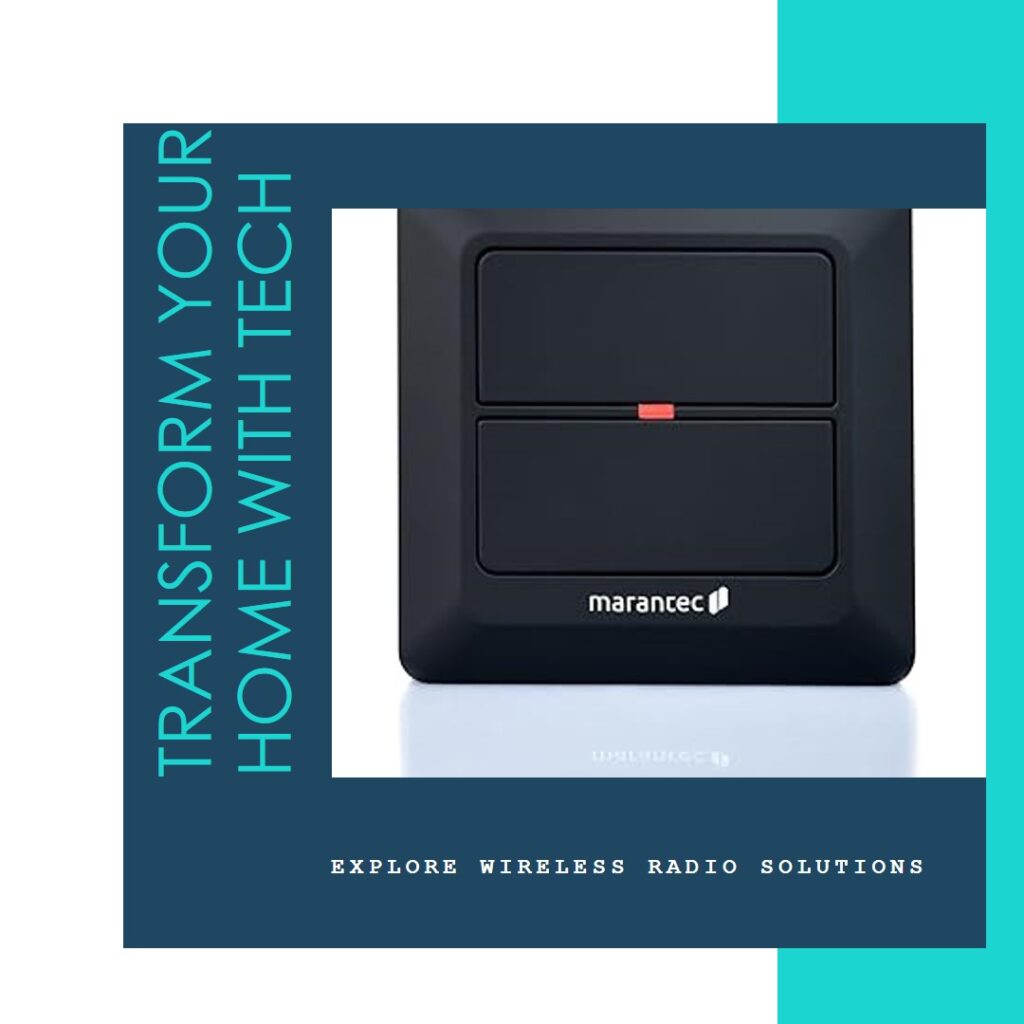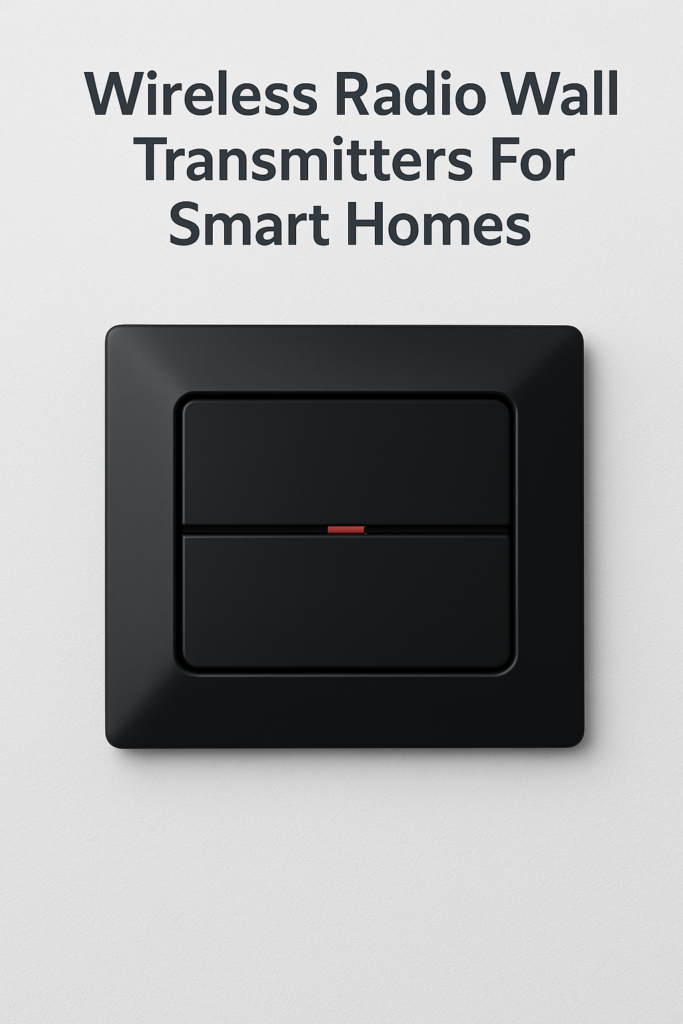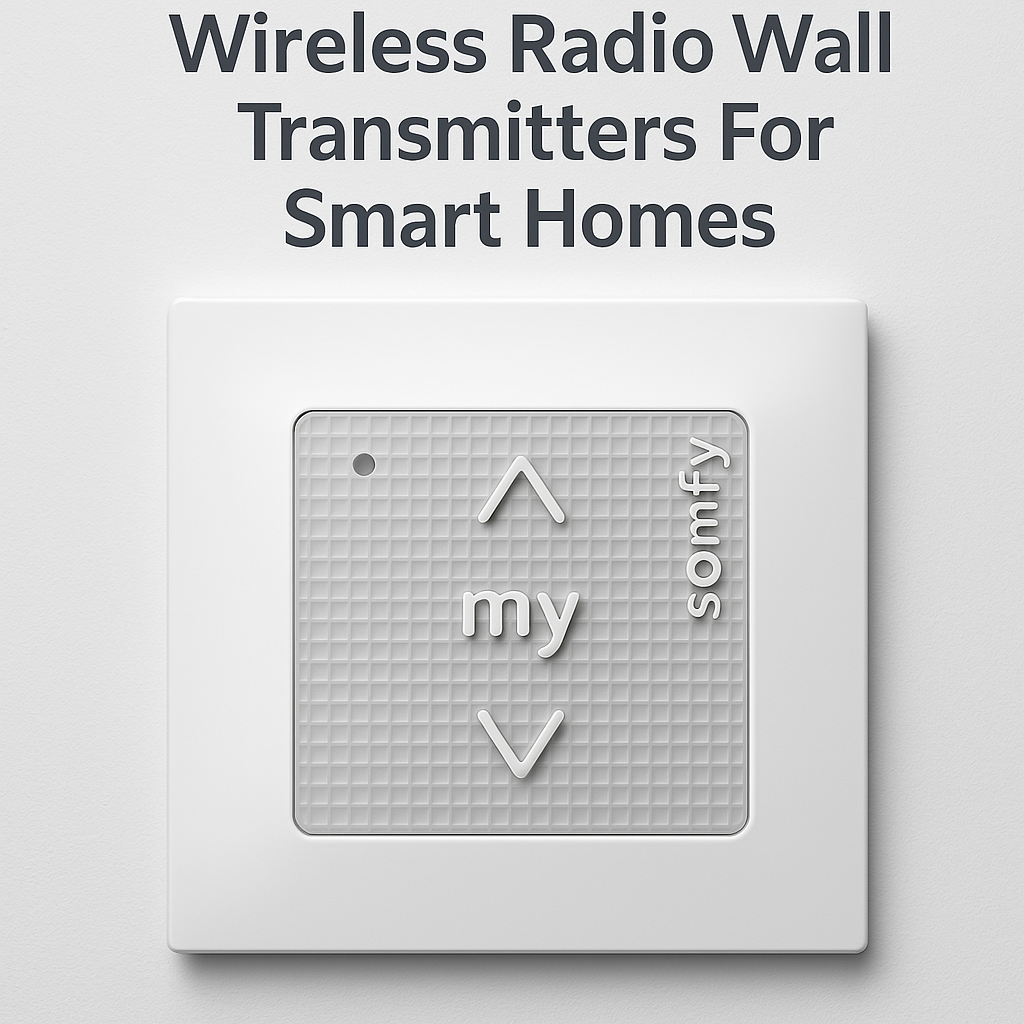
Smart homes are no longer a futuristic concept—they are rapidly becoming a reality for millions of households worldwide. Among the many innovations driving this transformation, wireless radio wall transmitters stand out as a game-changing technology. These devices enable seamless control of smart home systems, offering convenience, efficiency, and enhanced functionality. In this blog, we’ll explore what wireless radio wall transmitters are, their benefits, recent trends, and how they are shaping the future of smart home automation.
What Are Wireless Radio Wall Transmitters?

Wireless radio wall transmitters are compact devices that use radio frequency (RF) signals to communicate with receivers in smart home systems. Unlike traditional wired switches, these transmitters operate without the need for complex wiring, making them ideal for retrofitting existing homes or enhancing new ones.
Key features include:
- Battery-powered operation: Many models are independent of mains connections, allowing installation anywhere.
- RF communication: Signals can penetrate walls and floors, ensuring reliable control across rooms.
- Ease of installation: They can be mounted using screws or adhesive pads on various surfaces like glass or furniture.
Benefits of Wireless Radio Wall Transmitters

1. Convenience and Flexibility
Wireless transmitters eliminate the need for complicated wiring, making installation quick and hassle-free. They can be placed in strategic locations to maximize accessibility, allowing users to control lights, blinds, and other devices from multiple points in the home.
2. Enhanced Functionality
These devices integrate seamlessly with smart home ecosystems such as lighting systems, security setups, and IoT-enabled appliances. Advanced RF technologies like Wi-Fi HaLow support long-range communication with minimal interference.
3. Reliability and Range
RF signals used by these transmitters can travel through walls and floors without losing strength. This makes them ideal for large homes or areas with physical barriers.
4. Energy Efficiency
Modern wireless transmitters consume minimal power, often lasting years on a single battery. Technologies like Wi-Fi HaLow further enhance efficiency by supporting low-energy transmissions.
Recent Trends in Wireless Radio Wall Transmitters

Wi-Fi HaLow Technology
Wi-Fi HaLow is revolutionizing smart home connectivity by providing long-range RF communication on sub-1GHz frequencies. This allows devices like security cameras and sensors to operate over distances exceeding 1 kilometer while consuming less power.
Integration with IoT Standards
Emerging protocols like Matter and Amazon Sidewalk are enabling better interoperability between devices from different manufacturers. This ensures that wireless transmitters work seamlessly within diverse smart home ecosystems.
Adoption in Smart Home 3.0 Era
The demand for interconnected smart devices is driving the evolution of smart homes into multi-device linkage systems with scenario-based control. Wireless transmitters play a crucial role in enabling this interconnectedness.
How Wireless Radio Wall Transmitters Work
Wireless transmitters send RF signals to paired receivers within a designated frequency band (e.g., 433 MHz or 2.4 GHz). These signals activate specific functions such as turning lights on/off or adjusting blinds. Advanced models feature secure coding systems to prevent interference from other wireless devices.
Popular Use Cases and Examples
Wireless radio wall transmitters are versatile and can be used for:
- Lighting Control: Remotely dim or switch lights on/off from any room.
- Security Systems: Activate alarms or cameras wirelessly for enhanced safety.
- Smart Thermostats: Adjust temperature settings without physical access to the device.
- Garage Doors: Open or close doors conveniently from inside the house.
Top Features to Look For in Wireless Radio Wall Transmitters
When selecting a wireless transmitter for your smart home, consider the following:
- Signal Range: Ensure it covers your entire home (e.g., up to 30 meters indoors).
- Compatibility: Look for devices that integrate with popular platforms like Alexa or Google Home.
- Battery Life: Opt for models with long-lasting batteries to minimize maintenance costs.
FAQs About Wireless Radio Wall Transmitters
1. What is the range of wireless radio wall transmitters?
Most transmitters offer indoor ranges of up to 30 meters and outdoor ranges exceeding 70 meters.
2. Can these transmitters work through walls?
Yes, RF signals can penetrate walls and floors effectively without losing strength.
3. How do I pair a transmitter with a receiver?
Typically, you activate the receiver’s pairing mode (often via a button) and sync it with the transmitter.
4. What frequency bands are used?
Common bands include 433 MHz and 2.4 GHz; newer technologies like Wi-Fi HaLow use sub-1GHz frequencies for extended range.
5. Do RF signals interfere with other devices?
Most systems use unique codes to prevent interference with other wireless technologies operating nearby.
Conclusion
Wireless radio wall transmitters are transforming the way we interact with our smart homes by offering unparalleled convenience, reliability, and energy efficiency. With advancements like Wi-Fi HaLow and IoT standards such as Matter gaining traction, these devices are set to become even more integral to modern living spaces. Whether you’re looking to retrofit your home or build a new one equipped with cutting-edge automation features, wireless transmitters are an excellent choice to enhance your smart home experience.
Pingback: Wi-Fi HaLow Vs Other Wireless Standards: A Game-Changer For IoT Connectivity - SmartElectricalHomeRenovation